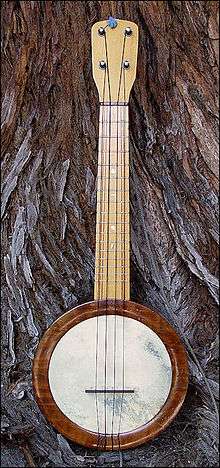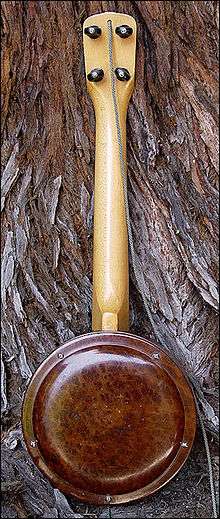George S. Sandstrom
During the early 1900s George S. Sandstrom, of Oakland, California, made what is called a Banjo Ukulele, or banjolele. A combination of a ukulele and a banjo, which at the time sold for about $2.00.


Patent and Construction
On 12 December 1917 Sandstrom filed patent application number 206746. He was awarded patent number 1354268,[1] titled "Banjo," on 28 September 1920.
The patent specifications describe Sandstrom's invention, in part, as "...a tightening device for banjo heads and other musical instruments having an open circular rim, a flexible head interposed within the opening of the said rim, an annular lip integral therewith and extending inwardly from the top of said rim, a flat top ring fixedly to the inside circumference of the said rim over which said head is drawn.
Specs.
- Length: 20 1⁄4"
- Body Dia: 7"
- Body depth: 2 1⁄8"
Materials
George Sandstrom's instruments had light Maple necks with a medium dark maple body. A few were made with the body, and resonator of burled California Redwood.